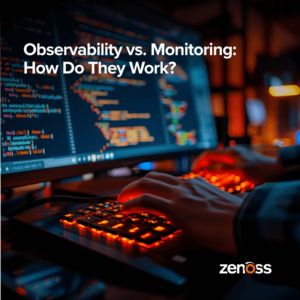
Zenoss CTO Alan Conley and Stu Miniman, an analyst at Wikibon, cohosted the event. It was based on a survey Zenoss put forth via various channels, including this blog and social media, among other places. About 340 people answered it, and out of that number, 30% have already adopted some type of converged infrastructure solution, with another 51% actively considering one.
As Alan noted, that 81% interest in converged infrastructure may be skewed since people who either have deployed it or are at least intrigued by its possibility are more likely to respond to this type of survey than those who don’t. Nevertheless, the survey does offer reasons why people gravitate toward the concept and so is useful for those of you thinking about it.
My original webinar recap revolved around workforce issues because I had just completed a three-part series on converged infrastructure staffing. This time I’d like to focus on what drives organizations to consider converged infrastructure – and what goads them to implement it.
Driving Toward Convergence
So what drives businesses to consider converged infrastructure? The top five responses were similar, regardless of whether respondents have already implemented it or not:
-
Efficient provisioning via automation
-
Faster delivery of resources to customers/faster reallocation of resources as requirements change
-
Lower operating costs (OPEX)
-
Lower capital expenses through higher resource utilization (CAPEX)
-
More agility responding to business needs
Not surprisingly, technology companies showed the most interest and/or adoption in converged infrastructure. However, both telecom and education companies tied as the next two industries most interested in adopting converged infrastructure in some fashion. Stu opined:
-
These companies want to have an infrastructure that allows them to rapidly deploy new services and meet needs of business and [set up] simpler configurations that have a lot more automation than what they have.
The CAPEX/OPEX Pothole
Of course, just because you desire converged infrastructure doesn’t mean it’ll be deployed. Stu pointed out that one of the biggest challenges facing today’s IT departments is trying to manage more with budgets that haven’t budged since before virtualization became widespread:
-
Usually the C-level suite want to see things that will save them on capital expenses, and the challenge is that a lot of these converged infrastructure solutions aren’t necessarily going to be less expensive than the alternatives. But we really can see savings from an operational standpoint [because] it’s simple to figure out how fast we can deploy a solution and...how much operational savings we can have in time-to-deployment, spinning up new applications, and day-to-day management compared to what we were doing beforehand.
To overcome that impasse, IT organizations will have to deliver and sell a narrative that shows the ways these OPEX-related improvements will ultimately save the business on CAPEX concerns over the long-term. Otherwise, this so-called misalignment will continue the sort of inertia plaguing so many IT departments that already are overwhelmed by the transformation in the way they deliver services.
That Gateway Project
Another impediment to implementing a converged infrastructure solution is the way IT has traditionally procured its resources (yep, silos strike again). Typically the server team buys servers, the networking team chooses the networking equipment, and the storage team picks the storage hardware and software, and so on.
When you propose using converged infrastructure, who’s in charge of making these purchases? Who is in charge of managing this whole environment?
According to Stu, a specific use project is the best way to bring the silos together:
-
A project they’re going to deploy, where they need to get everybody together to have that solution work across all of these environments [may be] the best way to move to a converged infrastructure.
Survey respondents came up with six projects best suited for driving converged infrastructure installations:
-
VMware project, such as VDI (Virtual Desktop Infrastructure)
-
UC (Unified Communications) project
-
Custom application
-
Big Data project
-
Database project
-
IaaS (Infrastructure-as-a-Service) project
VDI seems an especially good gateway project because it offers obvious cost and management benefits and forces a fundamental change in operations. Explained Stu:
-
Rather than desktop engineers going around to individual desktops and managing things, VDI is one of those solutions that companies will pull everybody together and say, "Let's try this new, simpler model with converged infrastructure to deploy VDI." Once they find that it's faster to deploy, works well, and can be managed by a central team, they will expand that to additional applications.
Alan said that Unified Communication is another possible pilot candidate for a converged-infrastructure project:
-
When VoIP first became available, you ran it on a physical infrastructure. Now you run it as software on a virtual machine. If you want to scale up quickly to support higher demand for voicemail or number of calls, having a virtualized instance of a PBX and your voice-messaging system can more rapidly respond to the needs of these greater requirements, which would drive you to put something like this on top of a virtualized infrastructure.
Once you put a project like this into motion, organizations start to see the ways in which such a streamlined solution lets them rapidly deploy new services that are easier to configure, provide better automation, and better aligns with business needs than previous solutions. The change is so dramatic that I can almost picture solutions like VCE’s Vblock or NetApp’s FlexPod coming with warning labels like: Caution. May cause increased usage across multiple scenarios.
Then again, when has addiction to improving processes, cutting expenses, and improving employee workloads ever been a bad thing?







